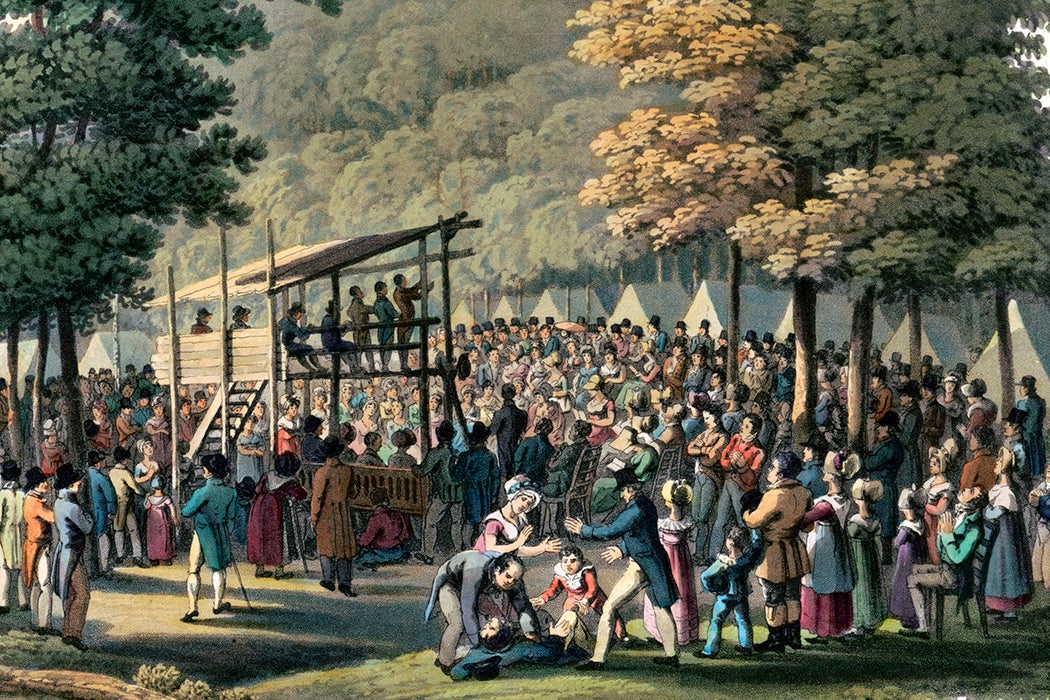The contrast between the cold logic of science and the emotionality of religion is a seemingly unshakable binary today. But back in the early nineteenth century, people saw things very differently. Historian Jeffrey A. Mullins examines the religious revivals of the Second Great Awakening in the 1830s.
At that time, Mullins writes, Americans did not see science and religion as opposites. Instead, they were “two aspects of the same universal truth.” And that truth was not based in pure logic. Emotions were a key to human behavior, and controlling and channeling emotions was a job for scientifically- and morally-grounded experts.
This perspective led to a wealth of reformist interventions, from Sunday schools to penitentiaries to graham crackers. Preachers who led religious revivals around the country in the 1830s saw the need for a highly engineered emotional experience.
Religious leaders like prominent Presbyterian minister Charles Grandison Finney travelled from state to state, holding multi-day revivals featuring nighttime preaching, sermons that called on the audience to scrutinize their own sins, and a constant drumbeat of prayer and religious discussion. The events were carefully planned for maximum emotional impact, and they were highly successful, reliably resulting in multiple conversions.
Many fellow Protestants complained about the formulaic psychological methods, or saw the revivalists as focusing too much on human agency rather than leaving conversions in God’s hands. Universalist Reverend Hosea Faxon Ballou, for example, criticized one revival for its “management and contrivance” by “erring mortals.”
Ballou argued that feelings of grace induced by a premeditated scheme were illegitimate. Days and nights of energetic preaching and prayer simply wore people’s defenses down and excited their “animal passions.”
Want more stories like this one?
But, to Finney and his colleagues, there was nothing wrong with a mechanistic system that prepared souls for conversion. Finney drew on agricultural metaphors to make the case for a scientific approach to spiritual matters. Just like a farmer using agricultural knowledge to cultivate grain, preachers could harness the “laws of nature” to predictably induce a religious awakening among a group.
Imagine, he wrote, preaching to farmers
that God is sovereign, and will give them a crop only when it pleases him, and that for them to plow and plant and labor as if they expected to raise a crop is very wrong… and that there is no connection between the means and the result on which they can depend…. Why, they would starve the world to death.
Revivalists also challenged more conventional Christian reformers’ focus on gradual self-improvement as the road toward salvation and moral behavior. “Shedding the need for prolonged preparation, revivals reinvigorated the idea that all souls were equal before God, and thus had equal capacity to accept his grace,” Mullins writes. And, the preachers argued, having opened to this grace during a revival, newly reborn Christians would gain the “knowledge and perspective as well as the strength to will against sinful choices.”
Emotions, elicited through a scientifically planned process, were the catalyst for true religious belief.







